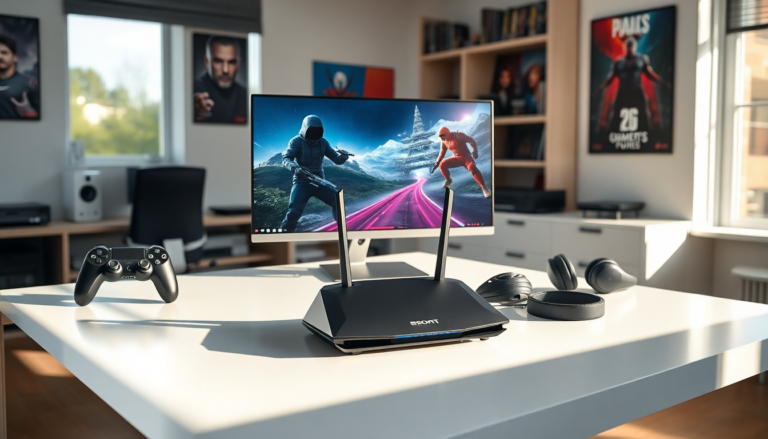Argomenti trattati
The gaming router market in the U.S. and Europe is *on the rise*, driven by the ever-growing demand from an enthusiastic gaming community. Gamers are on the lookout for high-performance networking solutions that can elevate their online experiences, especially in competitive esports and multiplayer environments. Have you ever noticed how standard routers often fall short, leaving gamers frustrated? That’s why many are turning to specialized gaming routers that prioritize gaming traffic and reduce network interference.
What’s Fueling Market Growth?
The rapid expansion of online gaming has created a *critical need* for devices that deliver extremely low latency and high throughput. With the arrival of next-generation gaming consoles and advanced PC setups, this demand is only intensifying. These cutting-edge technologies require superior bandwidth and advanced network management capabilities. As a result, gamers are increasingly investing in gaming routers designed to support their data-hungry needs. But what exactly do these routers offer that standard ones don’t?
Technological advancements in wireless standards are also playing a *pivotal role* in this market’s evolution. The adoption of Wi-Fi 6, Wi-Fi 6E, and even the upcoming Wi-Fi 7 technologies is unlocking unprecedented speeds and reduced latencies. This means routers can handle a growing number of connected devices without skipping a beat. As consumers become more aware of these benefits, many see high-end gaming routers as a *must-have* for an optimal gaming experience.
How Competition is Driving Innovation
The competitive landscape in the gaming router market is fierce, leading to rapid innovation among manufacturers. Companies know they must invest heavily in research and development to stand out and capture market share. This competitive pressure is pushing advancements in key performance metrics like processing speed and range. Manufacturers are incorporating faster processors and refining antenna designs to ensure broader coverage and stronger signals. But how are these innovations changing the gaming experience?
Additionally, the focus on user experience has spurred the creation of sophisticated software solutions. Advanced Quality of Service (QoS) features are becoming standard, allowing automatic prioritization of gaming traffic. Plus, manufacturers are developing user-friendly mobile apps that simplify setup and management, making it easy for consumers to finely tune their gaming experience. Isn’t it great when tech makes life easier?
Security is another area where innovation is thriving. Manufacturers are integrating advanced firewalls and built-in VPN support to safeguard users against online threats. This comprehensive approach to product development ensures that gaming routers are not only fast but also secure and user-friendly, meeting the evolving demands of gamers.
Who’s Leading the Charge?
Several key players are dominating the gaming router market in the U.S. and Europe. Brands like ASUS, NETGEAR, TP-Link, D-Link, and Huawei are continually refining their product lines and seeking strategic partnerships to bolster their market positions. Collaborations with chipset developers and esports organizations keep them aligned with the latest performance requirements and consumer preferences. But how do these partnerships translate into better products for gamers?
Market diversification is another vital strategy these companies employ. By offering products tailored to various segments—from entry-level routers for casual gamers to high-end models designed for professionals—they can reach a wider audience. This relentless pursuit of innovation and strategic positioning is crucial in this competitive landscape, ultimately benefiting consumers with improved networking solutions. So, whether you’re a weekend warrior or a serious competitor, there’s a gaming router out there that’s just right for you.

